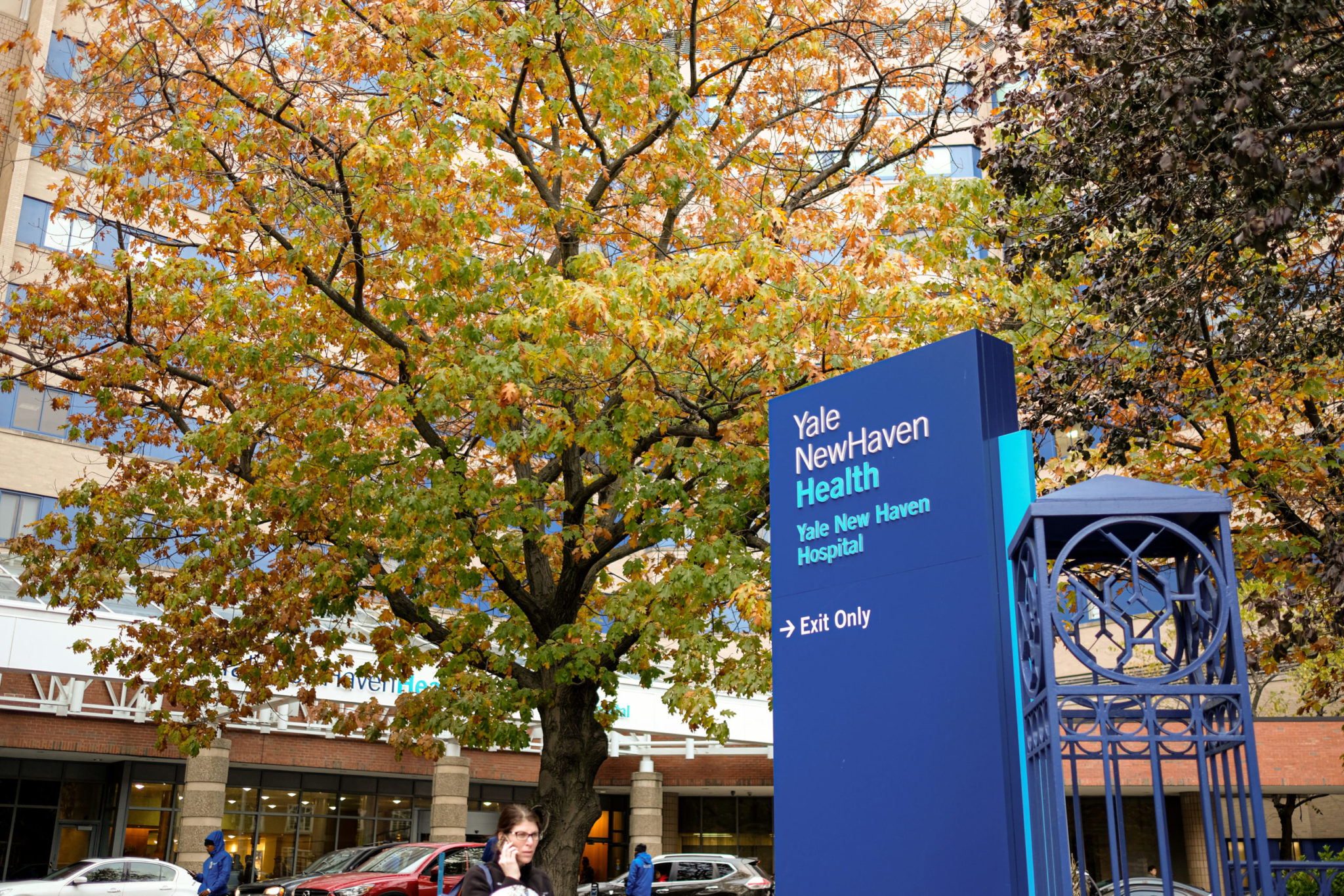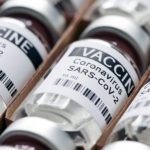
Eric Wang, Senior Photographer
On Feb. 15, less than a month after the United Kingdom coronavirus variant was detected in Connecticut, Gov. Ned Lamont announced the state’s first COVID-19 case associated with B.1.351, the variant initially seen in South Africa. Yale scientists warn that the battle against these variants in New Haven and across the world is far from over.
The Connecticut resident who tested positive for the South African variant lives in Fairfield County and had not “recently traveled,” according to the Department of Public Health. The patient is currently hospitalized in New York due to complications from COVID-19. According to NBC New York, the case also marks the first identification of B.1.351 in the tristate area.
The threat of both the South African and U.K. variants relates to their more infectious nature. Mutations to coronavirus spike protein — the part of the virus that latches onto a human cell — have been identified in both variants and are thought to make them more transmissible. To prevent other similarly, or even more, threatening variants from emerging, widespread vaccination is imperative, according to Thomas Balcezak, chief clinical officer for the Yale New Haven Health System.
“In this marathon, we now have a sprint to the finish,” Balcezak said in a Feb. 18 YNHHS press conference. “We need to get to vaccination before this variant takes hold within our community.”
Joseph Fauver, an associate research scientist at Yale School of Public Health Assistant Professor of Epidemiology Nathan Grubaugh’s lab, said that the Grubaugh team — which aids the state with systematic viral sequencing efforts — has not yet detected any additional cases caused by the South African variant in Connecticut.
But according to Fauver, the number of infections caused by the B.1.1.7 variant is on the rise in Connecticut. Data showed that the B.1.1.7 variant quickly proliferated within the U.K. and that a large proportion of the coronavirus cases following the confirmation of its presence were caused by the variant. Connecticut data is echoing those findings, Fauver said.
Balcezak pointed out that in mid-January, about one in 30 COVID samples — selected at YNHH based on features from regular testing that could characterize them as variants — contained the U.K. variant. But as of Feb. 8, that proportion has grown to 22 out of 25. He explained that, because the U.K. variant — like the South African variant — seems to have a selective advantage that favors its spread, it is likely that it will eventually become dominant among the circulating coronavirus variants.
Clinical Director of Yale’s Molecular Diagnostics Laboratories Pei Hui told the News that YSPH, the Yale School of Medicine and the Yale New Haven Hospital are working closely with the Connecticut Department of Public Health to surveil the rise and proliferation of coronavirus variants within Connecticut.
The Grubaugh team, which is part of those efforts, does routine sequencing of diagnostic tests from around the state to help keep tabs on how the variants circulate locally. They sequence around 100 samples each week.
One of the genetic markers that PCR coronavirus tests aim to detect is the virus’ S gene, which codes for the spike protein that allows the virus to infiltrate human cells. The new coronavirus variants seem to have a mutation within that S gene, which can be identified through diagnostic testing that yields a “S gene dropout” result. Positive COVID-19 samples that produce positive results but suggest an “S gene dropout” lack the S gene targets that a PCR test typically checks for. This suggests that the viral material within the sample could be compatible with the S gene mutation that has been identified in the variants.
In addition to general sequencing, the Grubaugh lab also does more targeted sequencing of samples that result in this “S gene dropout,” which hints that it may be a variant, but researchers must sequence the full genome to be certain.
But Fauver said that a more comprehensive and uniform approach to sequencing coronavirus samples is needed. Currently, according to Fauver, samples are only being sequenced where there are resources and interest, but there is no system in place to track the variants as they infect people across the country. This week, the CDC announced a $200 million payment to fund the sequencing of an additional 25,000 samples per week.
“The sequencing thus far in the pandemic has been pretty ad hoc,” Fauver said. “Different academic groups, some industry groups and public health labs are doing it, but it definitely hasn’t been at the systemic level that we’re looking for.”
A longer infection period?
The Grubaugh Lab recently published a preprint study, which has not yet been peer reviewed, based on data from its NBA genomic surveillance program. The data spans the last two months, when NBA players were tested for the coronavirus each day. Because the athletes are tested so frequently, the team can monitor “viral trajectories” starting the first day someone tests positive. But the Grubaugh team’s limitation is its sample size — only 65 individuals, seven of which were infected with the B.1.1.7 variant.
Still, from the study, the Grubaugh Lab found that the duration of infection was substantially longer for patients infected with the B.1.1.7 variant, as compared to the original variant. The study found that the average duration of infection for non-B.1.1.7 variants was about eight days, Fauver said. For the individuals in the study infected with the B.1.1.7 variant, this duration stretched to an average of 13 days.
Fauver said the longer infection period could suggest why the variant might be more transmissible, as a person who is infected for a longer period of time has a longer window of opportunity to spread it to others. This finding, according to Fauver, could suggest the need for a longer isolation period for those who test positive.
Going forward: Impacts on vaccine effectiveness
Fauver emphasized that the new coronavirus variants do not nullify the efficacy of existing FDA-authorized vaccines.
“Preliminary data suggest that antibodies from natural infection or vaccination may be less effective against these two variants, but they are not associated with more severe illness,” Hui told the News.
It seems, however, that the new variants are able to evade the protective mechanisms of some immunizations. The AstraZeneca vaccine, which was found to be 81 percent efficacious against older variants, was only 10 percent efficacious against the South African variant.
For now, the same concerns do not seem to apply to the Pfizer and Moderna vaccines, according to Balcezak. Though their efficacy at preventing symptomatic illness may decrease slightly, and tests are still being conducted to verify how effective they are against each of the variants, the Pfizer and Moderna shots are remarkably effective at minimizing death, hospitalizations and serious illness, Fauver said.
“I don’t see anything, from what I’ve read, that [raises] any concern that the vaccines are not going to be efficacious with these variants,” Balcezak said. “I think we don’t have to change strategy or course, I just think we need to be sharper on our focus.”
Still, Grubaugh emphasized that the race between variants and vaccines is now playing out and expressed concern that the virus might continue to mutate as more people catch it. If vaccine rollout continues to face obstacles, the process could select for a variant against which the vaccines are not as effective, according to Grubaugh.
“We don’t really know what that’s going to equate to on a population level yet,” Grubaugh said. “Unfortunately, we will end up watching the experiment in humans unfold in front of us … I’m not just worried about the named variants, I’m worried about what might emerge, and where all of this is heading.”
According to Gov. Lamont, 70 percent of Connecticut’s population that is 75 and older has been vaccinated against the coronavirus.
Rose Horowitch | rose.horowitch@yale.edu
Maria Fernanda Pacheco | maria.pacheco@yale.edu









